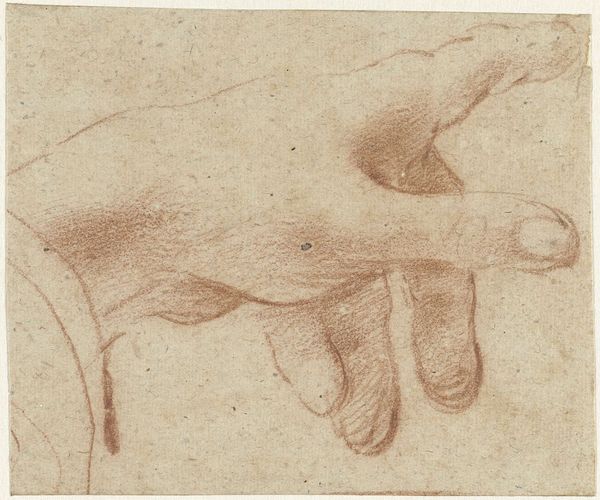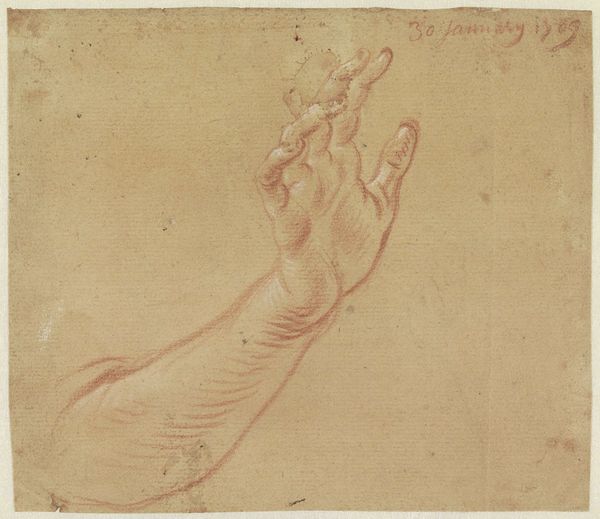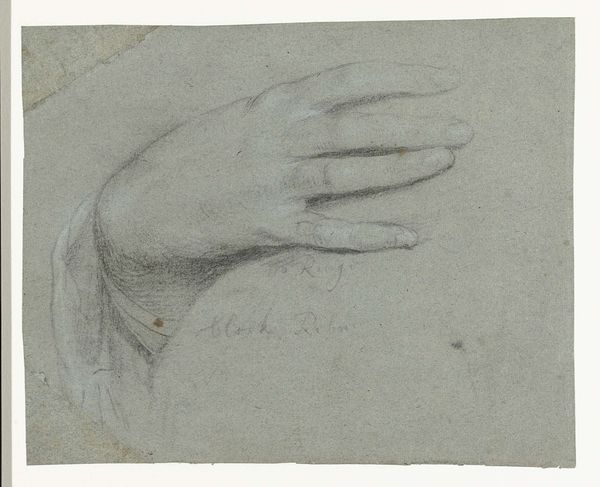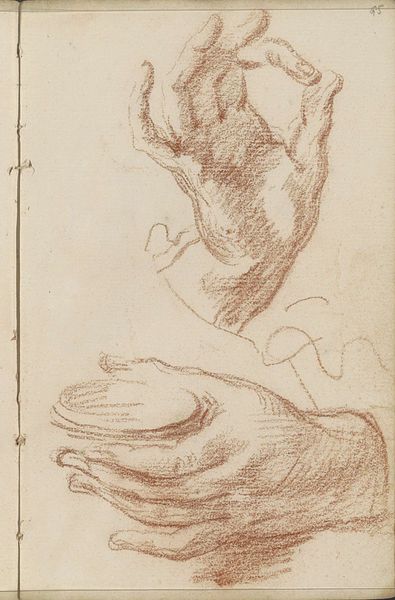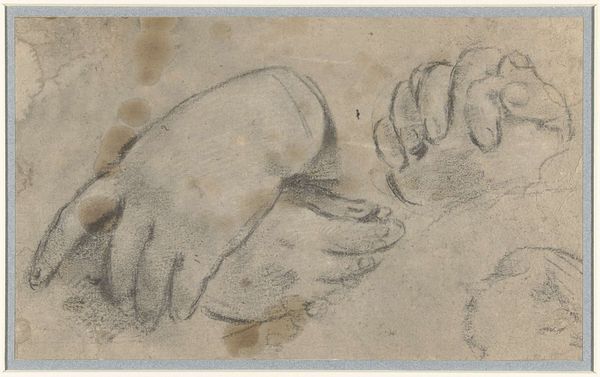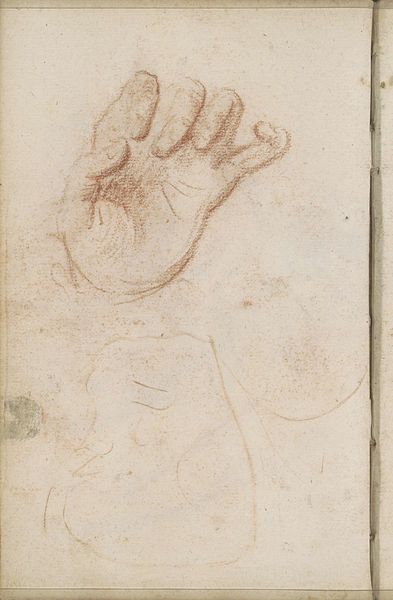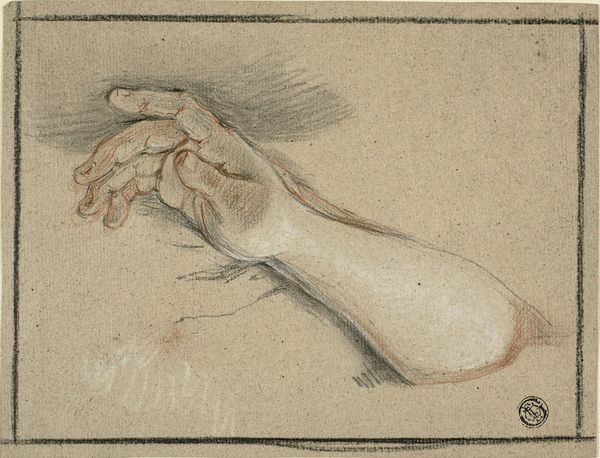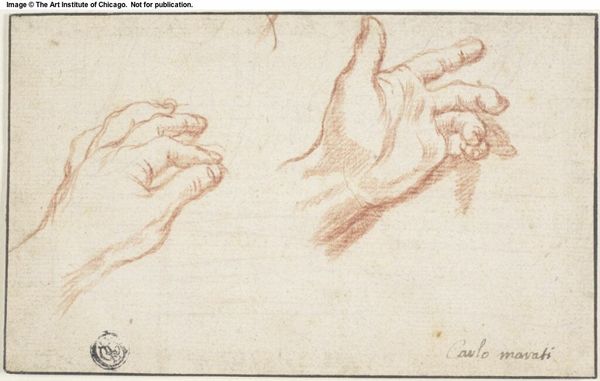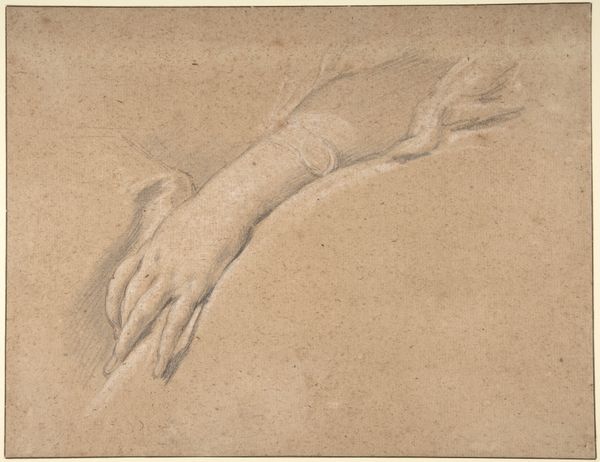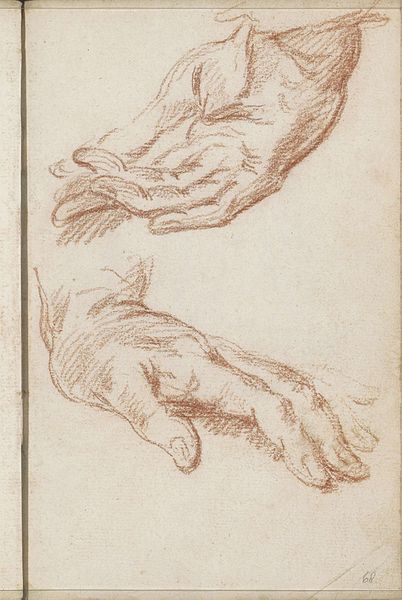
drawing, paper, charcoal
#
portrait
#
drawing
#
dutch-golden-age
#
pencil sketch
#
paper
#
form
#
line
#
genre-painting
#
charcoal
#
realism
Dimensions: height 88 mm, width 114 mm
Copyright: Rijks Museum: Open Domain
Curator: "Studie van een hand," or "Study of a Hand," a drawing possibly from 1657 by Moses ter Borch, really captures a transient moment, doesn’t it? It’s a beautifully rendered hand in charcoal. Editor: It really does. It looks so simple, but there is such a powerful and lifelike feeling, you can almost feel the bones. What do you see in this piece that I might be missing? Curator: Beyond the technical skill, I think it’s important to consider this drawing within the socio-political landscape of the Dutch Golden Age. It was a period where there was immense economic growth. The emerging middle class commissioned and consumed art that reflected their world and affirmed their values. This emphasis on the everyday—like a study of a hand—speaks to a culture invested in celebrating human form and activity, in celebrating labor itself, although likely not from the laborer's point of view. Consider who was usually able to afford this work, the relationship between them and those who toiled. What kind of power dynamics might we be seeing reflected here? Editor: That’s fascinating! I was just thinking about the composition itself. The focus on a single body part makes it so personal. It's quite daring in how stripped back it is. I hadn't thought about who might have owned the drawing. Curator: Exactly. The intimacy you perceive becomes more complex when we understand the broader context. It forces us to confront whose perspective is being centered and whose is being marginalized. Considering ter Borch himself, where do we place him and his work within the context of the class systems of the period? Editor: It's making me rethink what "realism" truly means, as there's always a lens of power at play, isn't there? Thank you, I now have so much to consider about not just the artist and his subject, but also the role of art within 17th century Dutch society. Curator: Precisely. And in turn, how that history informs our present. Always keep questioning!
Comments
No comments
Be the first to comment and join the conversation on the ultimate creative platform.
